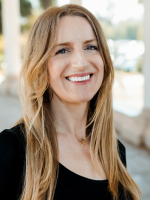"I'm retiring in June. It's kind of an amazing time to retire," said Patricia Rincon, UC San Diego dance professor.
Rincon first began teaching at UC San Diego in 1976. The program, she said, was small then, though it's still hardly considered a large program. On the campus of more than 35,000 students today, there's approximately 15 to 20 in the undergraduate dance program each year.

But the program has developed a lot since Rincon first started, and it's easy to imagine that its growth paralleled her own as a dancer and teacher, and flourished under the four and a half decades of her guidance. "It's grown from kind of a recreational program to a master of fine arts degree and a BA undergrad degree. So I had the wonderful fortunate life to be able to experience many students there and watch the program grow," Rincon said. The program has seen incredible talent, locally and worldwide, including Monica Bill Barnes and Natalia Valerde.
This spring, when UC San Diego switched to remote learning, the group of undergraduate dancers had to reconfigure and develop their final spring performances at home, without each other and without a stage.
The results were surprising. "New Directions," the project, is officially described as "experimental dance and digital performance," and is available for streaming June 4-6. As the students began adjusting to their new learning and choreography environments, Rincon began to realize that the students were actually becoming filmmakers. "They are actually filmmakers right now. That's what they're doing. They've learned all the technology, they're directing, they're choreographing, they're editing, they're doing everything a filmmaker would do," Rincon said.
"So in a way, what I'm doing is curating a dance-on-film festival," she said.
Performance is not just a logistical key to a student's dance education, but it's also where so much of the creative magic happens. But Rincon is convinced that removing a stage from the equation breeds even more of that magic.
"I’m a strong believer in site specific work. I'm a strong believer in new ways of seeing bodies moving, new conversations around something," she said.
"Look at Isadora Duncan. She danced in her revolutionary style in streets and in houses, in salons. And she wanted to make her conversations loud and clear, that it was her body and it was free to dance anywhere it wanted to dance. And I think that that has been the rebel of the dance, and the dancer, who can find any place to perform. And make it as important as the proper theater," Rincon said.
Each student approached their digital dance project differently, and each is highly produced. One student, a health care first responder, took to the abandoned beaches. Another used animated figures. Another enlisted sixteen other dancers on Zoom to perform in unison. One danced in a closet. The package of films is a time capsule not just of student creativity, but of the places and ways these students existed during a global crisis.
As to whether this format will stick around in the future, Rincon said she hopes so. "As all firsts, this will impact — and it should — how we do performances in the future," Rincon said. The accessibility issues associated with a live theater, for example, are worthy considerations. And Rincon added that new forms, pushing boundaries and changing expectations are important learning experiences for students.
After retirement, Rincon, who divides her time between central Mexico and San Diego, will spend more time working in San Miguel de Allende. She'll also return to UC San Diego periodically to stay connected with students and teaching.
Despite the disruption of their entire spring quarter and academic lives, Rincon said that she felt more of that intimacy and connection of the tiny program days at the start of her career. And in that way, it's a perfect framing device for her time teaching dance.
RELATED: Meet Hispanic Heritage Month Local Hero Patricia Rincon






